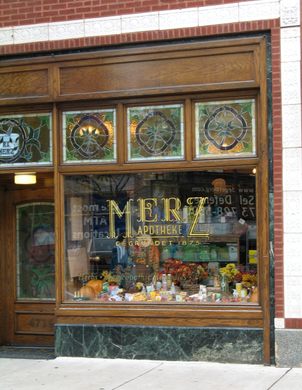"Before medicines came in pill form, pharmacists at the local apothecary blended mysterious powders and liquids to relieve everyday ailments and serious illnesses. About 20 years after aspirin was invented, and 80 years before polio was eradicated in the United States, a modest pharmacist named Peter Merz opened his shop on the north side of Chicago. The year was 1875. Though pharmacists did fill prescriptions written out by doctors, more often than not they played the role of doctor themselves, recommending their own remedies and preparing them for their familiar clientele. Rather than call his shop a pharmacy, Merz followed the European tradition and named it an “apothecary.” Immigrants fresh from Sweden and Germany and other parts of Europe flocked to this old world chemist. The salespeople spoke many languages, and their reputation grew. After over a century of success, and three generations of pharmacists, the store was on the verge of closing in 1972, when a young pharmacist offered to buy the shop. The store moved in 1982, a few miles down the street, to a larger space. The new building was designed to resemble a turn-of-the-century apothecary, complete with a hand-carved wooden facade, tin ceilings, and oak cabinets. The glass bottles originally used to store herbs added extra authenticity to the interior. The inventory has expanded since 1875 to include skin care and hygiene products, as well as a large selection of homeopathic medicine, vitamins and other natural remedies. The shop maintains its connection to European care and delicacy in the soaps and lotions it carries from France, Sweden, and other places. The shop still smells like a pharmacy in 1875. A melange of bitters, tea tree oil, chamomile, and harsher fragrances sift through the air. But while the aromas may be a century old, the remedies for sale are as modern as any drugstore." - ATLAS_OBSCURA




